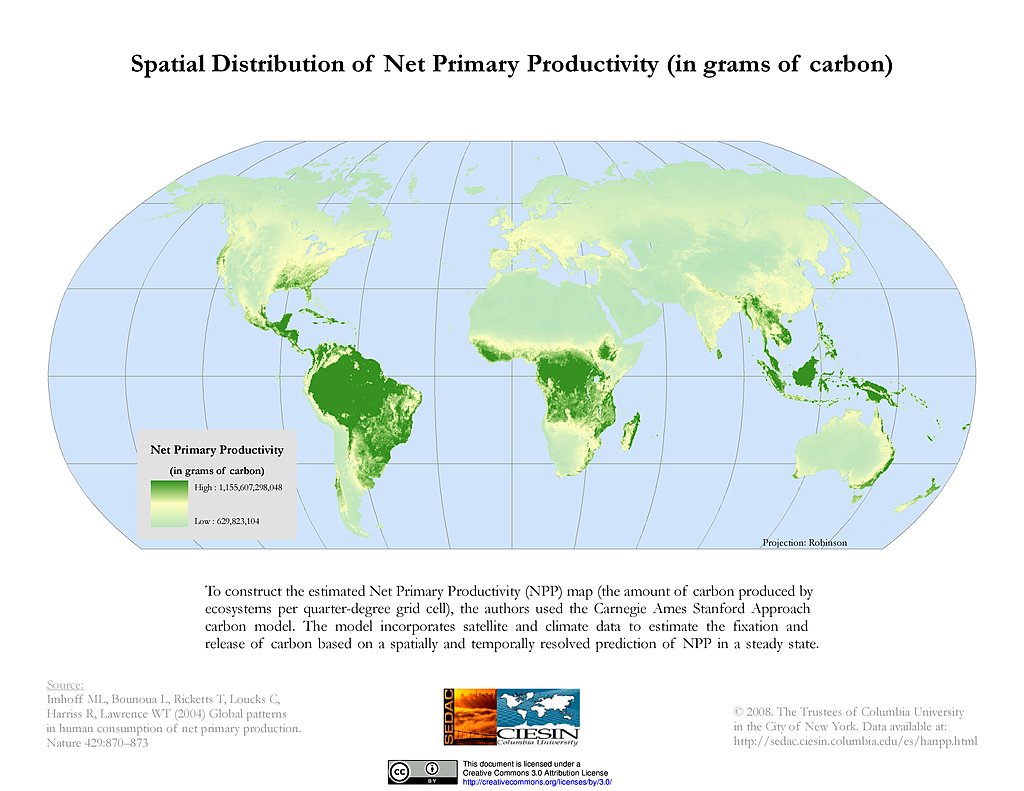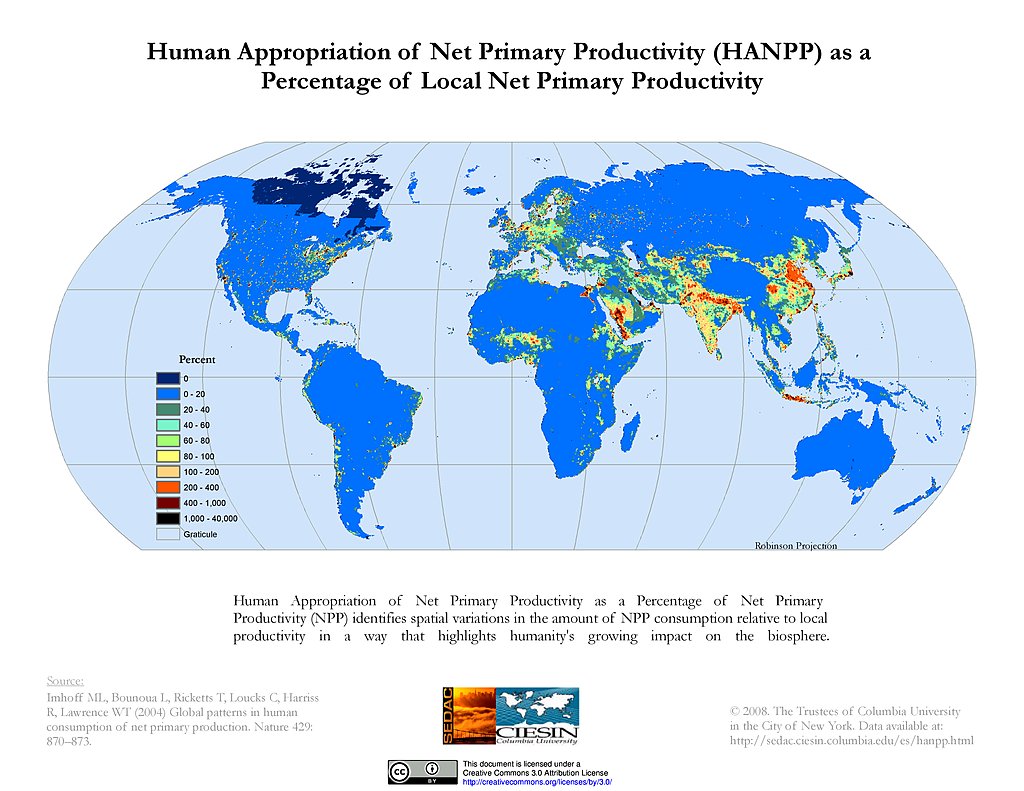Net primary production
Biomin primaarinettotuotanto (engl NPP, net primary production ) tarkoittaa yleensä eliöyhteisön eli biomin tuottajien eli lähinnä kasvien, sienten ja vastaavien. MOD17A2_M_PSN Välimuistissa Käännä tämä sivu Plants capture and store solar energy through photosynthesis. During photosynthesis, living plants convert carbon dioxide in the air into sugar molecules they. Net primary production (NPP) is the amount of carbon and energy that enters ecosystems.
Plants both take in and emit carbon dioxide.
Methods of estimating aboveground net primary productivity

NPP is the net amount of CO2 taken in by vegetation in a particular area. The increase in plant biomass or carbon of a unit of a landscape. NPP is equal to the Gross Primary Production minus carbon lost through autotrophic respiration. Net marine primary productivity is the. Julkaisun nimi: Creating a Regional MODIS Satellite-Driven Net Primary Production Dataset for European Forests.
A substantial fraction of GPP supports plant autotrophic respiration (Ra), with the remainder allocated to the net primary production (NPP) of plant structural.
Global human appropriation of net primary production doubled in the

With the seriously polluted environment due to social development, the sustainability of net primary production (NPP), which is used to feed. These changes increased the total net primary production by 25 percent. Such an increase in forest net primary production globally would fix about 50 percent of. NASA Goddard researchers conducted a press briefing at the American Geophysical Union. Biologists use primary productivity, or primary production, to establish how efficiently plants convert carbon dioxide, water and light energy into glucose and.
The Global Fire Emissions Database (GFED) "combines satellite information on fire activity and vegetation productivity to estimate gridded monthly burned area. As forests grow, they absorb carbon dioxide from. How are gross production, net production, and ecosystem production related? How are standing crop, turnover rate, and net primary production related? Net Primary Production (NPP) is the rate of photosynthetic carbon fixation minus the fraction of fixed carbon used for cellular respiration and maintenance by. This paper introduces human appropriation of net primary productivity (HANPP), a metric which tracks the percentage of global net.
Terrestrial net primary production (NPP) is of fundamental importance to food security and ecosystem sustainability. Understanding controls on net primary production (NPP) has been a long‐ standing goal in ecology. Climate is a well‐known control on NPP. The high production in the Southern North Sea along the coast is caused by.
Net primary production of a forest ecosystem with experimental co2

Estimating net primary productivity (NPP) has been a central goal of basic and applied ecologists. Very important questions rely on good estimates of NPP: the. The Landsat Net Primary Production (NPP) CONUS dataset estimates NPP using Landsat Surface Reflectance for CONUS. Total net primary production on Earth exceeds 100 billion tons of carbon per year, and it plays a profound role in the global carbon cycle.
The primary productivity of a community is the amount of biomass produced through. Subtracting respiration from gross primary production gives us net primary. Complete this section if you have business income and expenses from primary production activities. Primary production activities are described in Information for.
Croplands cover large areas of the globe and contribute significantly to the global carbon cycle. However, like other ecosystems, limited information exists on. The net impact is very unclear. I favor lower net primary productivity (NPP) because primary production gives rise to invertebrate suffering.
The potential effects of climate change on net primary productivity ( NPP) of U. The human appropriation of net primary production (HANPP) provides a useful measure of human intervention into the biosphere. Energy assimilated by autotrophs is stored as carbon.